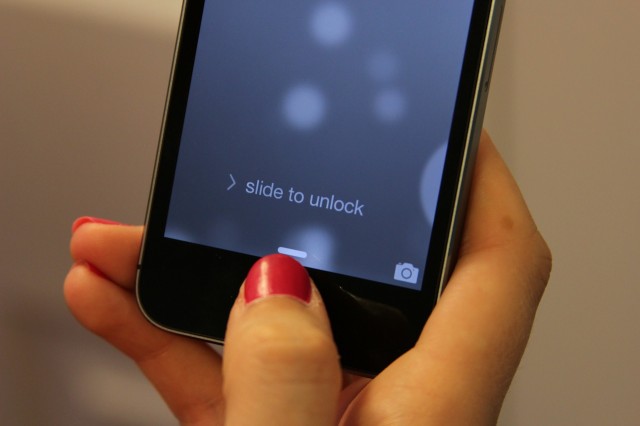
Every year since 2008, Apple has released new flagship iPhones in a predictable cadence: on even years we get a new external design; on odd years we get a refinement of the previous year's design with upgraded insides and new hardware features. Apple continues to issue updates in this comfortable, almost leisurely stride even as the Android vendors are releasing new high-end, tentpole products every six months or so.
This year is no exception. Apple's iPhone 5S is a tweaked version of the iPhone 5 that retains the same screen and physical dimensions of its predecessor. It swaps out the A6 chip for the faster A7 and adds some features that its predecessors aren't privy to. But the 5S also arrives alongside the iPhone 5C and iOS 7, and taken together the three new products are the biggest overhaul the iPhone line has gotten in years.
Our review will take a dive into the most important new features of the 5S, comparing them not just to the iPhone 5 (and thus, the 5C) but also to the iPhone 4Ss that many will be looking to upgrade. Is the phone significant enough that you should run out and get it, or should you wait for the inevitable iPhone 6?
Body, build quality, and screen

| Specs at a glance: Apple iPhone 5S | |
|---|---|
| Screen | 1136×640 4-inch (326PPI) touchscreen |
| OS | iOS 7 |
| CPU | 1.3GHz Apple A7 |
| RAM | 1GB DDR3 |
| GPU | "Apple A7 GPU" (likely an Imagination Technologies 6-series variant) |
| Storage | 16, 32, or 64GB NAND flash |
| Networking | 802.11a/b/g/n, Bluetooth 4.0 |
| Ports | Lightning connector, headphone jack |
| Size | 4.87" × 2.31" × 0.30" (123.8 × 58.6 × 7.6 mm) |
| Weight | 3.95oz (112 g) |
| Battery | 1560mAh |
| Starting price | $199 with two-year contract, $649 unlocked |
| Other perks | Charger, earbuds, Lightning cable |
The short version: The 5S is a whole lot like an iPhone 5.
The long version: This is always the shortest part of the "S" phone reviews. In terms of weight and physical dimensions, the iPhone 5S is every bit the equal of the iPhone 5. It's 0.30 inches thick and weighs 3.95 ounces, which makes it thinner and lighter than many competing (albeit larger-screened) Android phones and also the iPhone 4S models that at least a few people will be upgrading from. What looked sort of awkward and tall last year (at least when compared to previous iPhones) now looks completely familiar.
There are a handful of ways to tell a 5S from a 5 at a glance. One is the new Home button, which has been changed to accommodate the fingerprint sensor. Another is the oval cutout to the right of the upgraded camera that shows off the dual-LED flash. If you happen to actually get your hands on one, you may notice that it feels substantially faster than the iPhone 5 as well (and the 5 is definitely not slow).
If you're looking for something even more obvious, you can look for the new colors the 5S comes in. The silver-and-white option from last year is still around, but the black model has been replaced with a new, lighter model that Apple calls "space gray." This new color uses aluminum with a lighter anodization than the old black model. While it's difficult to say for sure, it seems like the new color will display scratches and scuffs less readily than the old black model did. And of course there's the gold model, which as we know can prompt people to get a little crazy.


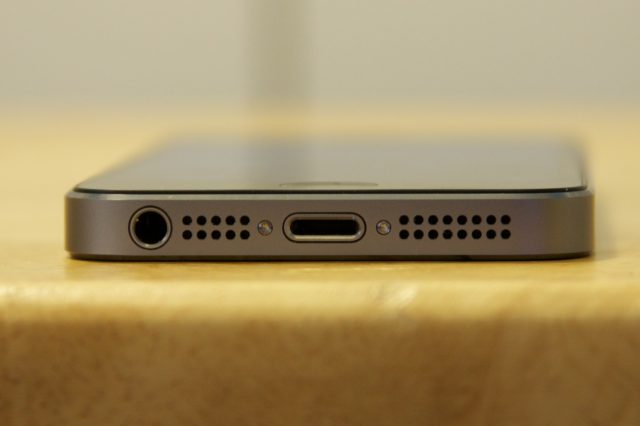

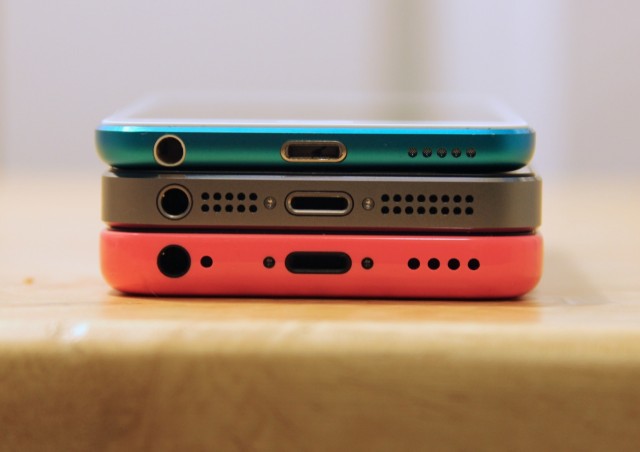
Having the same body as last year's phone means it shares the same screen as well, which is a blessing and a curse. The good part is that the 1136×640 326 PPI screen still looks pretty good, especially with the lighter design of iOS 7. The bad part is that the screen has been surpassed in size and density by other phones within its price range. Even if you don't care much for truly big phones like the Galaxy S 4 and HTC One, phones like the Moto X have shown that it's possible to squeeze a larger screen into a body that isn't uncomfortable to hold. Rumors that Apple is testing different screen sizes crop up regularly—if you were hoping for a larger iPhone, you're just going to have to cross your fingers and look toward next year. If you enjoy that the iPhone is a premium device that maintains a relatively small screen size, the 5S will keep you happy.
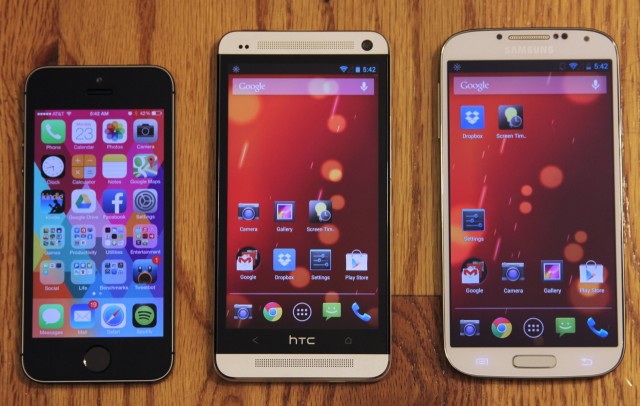
The look-and-feel of the phone remains the same as last year, but the fingerprint scanner, the camera, and the new internals are the real reason to upgrade. We'll spend the remainder of the review on these new aspects, but if you want to read more about how this phone looks and feels (and how it compares to older models like the iPhone 4 or 4S) our original iPhone 5 review will give you the gist of it.
Scanning fingerprints (and other things) with Touch ID
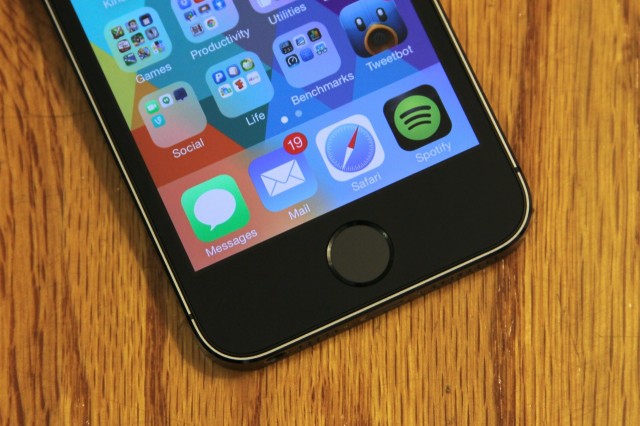
The short version: Touch ID isn't perfect, but it ought to prompt most iPhone users to practice better security.
The long version: Even more than the camera or the A7 chip, the iPhone 5S' fingerprint reader is one of the strongest arguments in favor of the new phone. I unlock my phone dozens of times in a normal day, and anything that makes it easier or quicker to do without substantially reducing my security could easily save me a couple of hours in a given month (though definitions of what constitutes a substantial reduction of security will vary from person to person).
To use the feature, you must first register each individual finger you'd like to use in the phone's settings, found in the same place where you can set and change your passcode in other iOS devices. The software will walk you through the registration process, which asks that you rest your finger on the sensor repeatedly until it has completed a satisfactory scan of your fingerprint. Once scanned, you can delete and rename your different fingers within the software—if you get mixed up, hold your finger down on the sensor and the listing for that finger will flash briefly to indicate that it recognizes you. You can register up to five different fingers with the software. I find that registering both thumbs and the index finger on my dominant hand covers me in most circumstances, but some recommend using a less-common finger like your pinky or ring finger to reduce the chance of someone opening the phone up with a lifted fingerprint.

These fingerprints are stored in something Apple refers to as a "secure enclave" on board the phone's A7 chip. While Apple doesn't usually like to divulge the specifics of such things, some intelligent speculation says that the "secure enclave" is an implementation of ARM's TrustZone technology. TrustZone as described by ARM calls for separate "Secure" and "Normal" worlds with a barrier between the two that keeps (potentially malicious) user applications from accessing the secure data.
At this moment, Touch ID can only be used to unlock the 5S and authenticate App Store and iTunes Store purchases. Apple has provided no API that allows third-party applications access to this data. This is probably for the best, and we honestly don't see Apple opening this up any time soon—remember, this is the same Apple that has yet to issue an API for the two-year-old Siri. Apple won't even let third-party apps use its speedy JavaScript renderer in the name of security. It's fun to speculate about what developers could do with Touch ID if they were allowed access to it, but don't hold your breath.
What you register with the software doesn't have to be a finger, strictly speaking. I was able to register my pinkie toe and the heel of my right palm (though my tongue wouldn't register no matter how hard I tried). TechCrunch was able to register a cat's paw (my own cat refused to cooperate). Senior Reviews Editor Lee Hutchinson documented his Touch ID adventures in the video below. He was also able to register a toe as well as his own nose but not a tomato. Many parts of the body can apparently be registered, provided they're large enough to touch the detection ring that surrounds the Home button and triggers the sensor—I'll leave you to figure out how big that makes Lee's nose.
Lee also demonstrates the sensor's "sub-epidermal" scanning by registering a banana peel but demonstrating that the phone would only scan the peel and unlock his 5S if his finger was behind it. "More to the point, it would only unlock if the same finger was behind it in roughly the same orientation that it was registered," he noted.
No matter what I registered, the software remained reassuringly free of false positives. While every now and again one of my fingers would fail to unlock the phone on the first attempt, I would say that 19 out of 20 times the feature works exactly as advertised. So far the only known exploit of the software requires the attacker to create what is essentially an exact replica of your finger, so for now the technology is as secure as any biometric authentication can be. A thief can get into your house with a replica of your house key; it doesn't mean you shouldn't lock your door, but it does mean you should perhaps consider multiple locks. That's something Apple's implementation doesn't let you do just yet.
Before we go celebrating the "death of passwords," it's extremely important to talk about the nuances of how Touch ID works. First, you must have a passcode of some sort set to use Touch ID. If you don't use a passcode, the Touch ID options remain grayed out and inaccessible. This is because using Touch ID does not disable or in any way supersede the standard "slide to unlock" function. Even with Touch ID enabled, you can still slide over and put in your passcode just like always. This means that if you already protect your phone with a passcode, Touch ID doesn't make your phone more secure in and of itself. It offers an easier, alternative way to unlock your device, but it doesn't offer a second layer of security or any sort of two-factor authentication option.
For my part, what Touch ID did do was make me more comfortable with using a complex passcode to protect my phone. I protected my previous iPhones with a standard four-digit passcode and by turning the "wipe phone after 10 unsuccessful unlock attempts" option on (which we recommended if you're using a simple passcode, since otherwise a determined attacker will eventually be able to input the correct code from one of the 10,000 possible combinations). Previously, a complex passcode was too inconvenient for me to bother with, since it made quickly unlocking my phone too difficult. Now, Touch ID makes it so that you only need to input that passcode in a limited number of scenarios—if your phone has just rebooted, if you haven't unlocked your phone in 48 hours, or if you're trying to change your phone's security settings.
The feature really seems to be aimed at the half of iOS 7 users that Apple's Phil Schiller says don't protect their phones with any kind of passcode. The emphasis placed on Touch ID during the phone's first-time setup process and in Apple's promotional materials will hopefully convince some of those people to begin taking any measures at all to protect their devices, and some security is always preferable to no security. For users like me who are already using simple passcodes, Touch ID makes it easier to justify using a complex passcode. Touch ID doesn't increase security all by itself, but it should encourage people to make use of the security options that exist in iOS.
reader comments
216